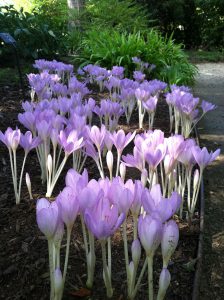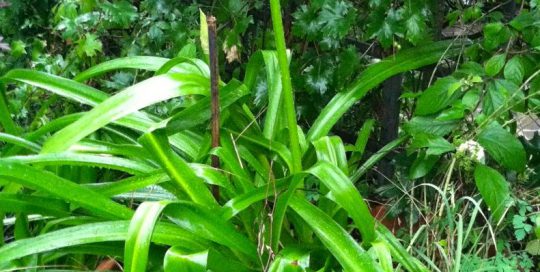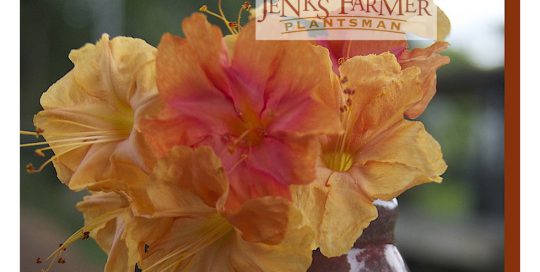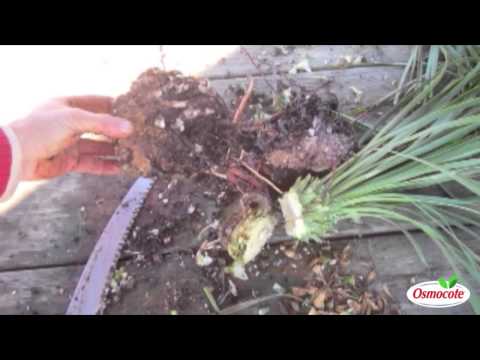Tidy Plants in Asheville
Views: 3490

AshTom and I spent the weekend in Asheville at a plant symposium led by visiting British and Japanese horticulturists.
Walking in the gardens, some guy said the most astounding thing to me.
“Everything seems to stop growing this time of year.”
I looked all around, to make sure I wasn’t alone with this nut. In doing so, I realized, he was right.
Phlox stood up straight. Hydrangea paniculata was frozen elegance. Hibiscus coccinius seemed topped out. Amsonia hubrectii stood elegantly, waving at four feet.
Here I was, about to go to the podium to present a lecture on what a problem late summer growth can be. I had a whole series of slides on pruning zinnias, four oclocks, gomphrena, arundo, cosmos, coleus NOW — I do this so they’lll grow and be pretty for fall. If you did this in the mountains, you may not get enough growth for a good fall show.
What the deal?
Why do friends in Asheville summer perennials peak and seem to hold on to their prime and stay tidy?
Asheville Degrees DIF
First answer is of course, those Asheville gardeners were showing off. They had spent days getting the gardens ready, using all sorts of mountain people tricks for making it look like they hadn’t done anything at all.
Second answer is the DIF. Asheville has the DIF. Lots of plants have a strong response to this. When visiting gardens in England I fell in love with the endless flowering of Lavatera ‘Barnesley‘. Back home, in the midlands of SC, it grew to be a huge, coarse, green mass all summer. It flowered for two days in the fall. ‘Barnesly’ needs a huge difference in day and night temperatures. I’ve read it needs 15 degree F DIF. Wow, we only get that for two days in spring and two days in fall. (needless to say , the dead of winter doesn’t count for summer perennials) So Lavatera showed off like an Asheville hillbilly punk band playing on the street corner. For those four days of good DIF.
Some plants respond to a big DIF not in flowering but in stem lengths. That’s why, in Columbia and coastal areas, your hibiscus may get 15 feet tall. Get the ladder if you want a picture. But in higher elevations, they top out so that you can actually see the flowers.
Other plants you’ll notice that are affected by the DIF are chrysantheums, ageratum and some salvia. Plants are more a part of the world that we are. Lots of things, from street lights and sunset, to wind and insects can change how they flower.
If you want to see some peak later summer gardens, check out the North Carolina Arboretum. If you want to stay in the midst of them, try the gardens at the White Gate Inn.
Then, when Asheville is blanketed by frost, in November, come back down to Beech Island. We have a crinum farm dinner and cocktail party scheduled on Sept. 28 — the cosmos, zinna and crinum will be lovin’ our swing, lovin’ the brief, beautiful DIF. For info on that event look at the calendar on www.jenksfarmer.com
Meet Jenks Farmer
Jenks's Recent Posts

Beans: A Nurse Crop for Perennials








